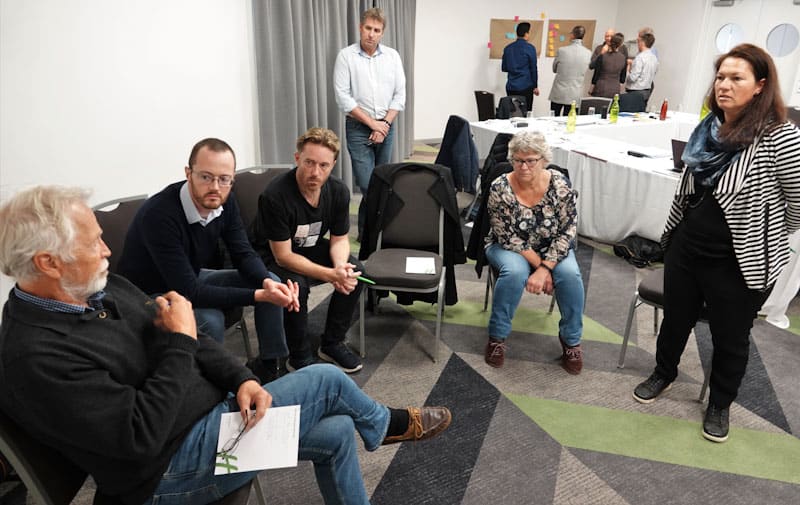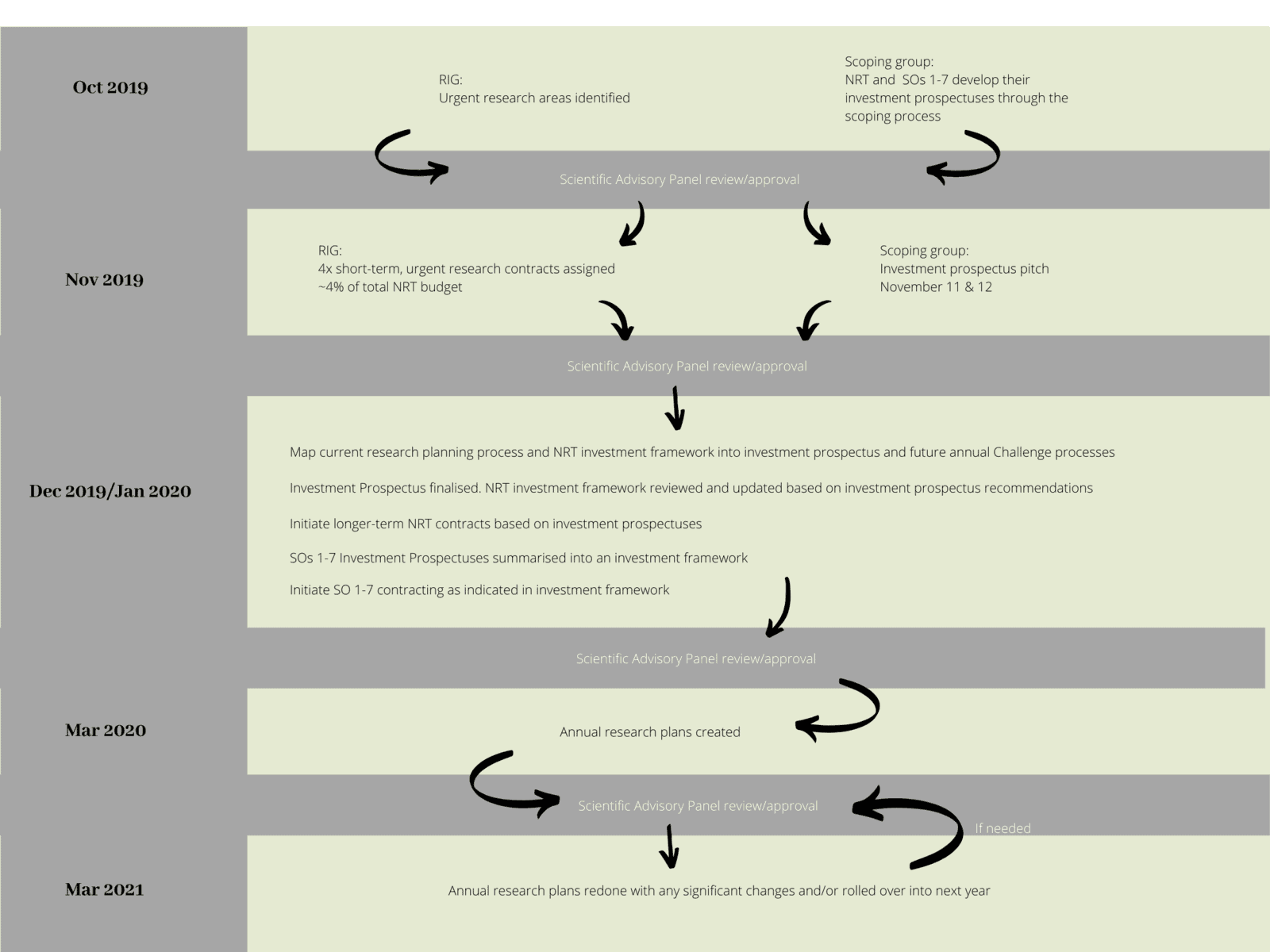
This feedback will be incorporated into the development of the final prospectus, which is due later in the year. Scoping groups are expected to stay in touch with partners and stakeholders throughout the Investment Prospectus drafting process.
In short, the draft 2024 goals for the NRT rōpū are as follows:
Our guiding star
The mauri of the kauri and of our native myrtle species are safeguarded, sustained and enhanced for our tamariki and mokopuna.
Our 2024 goals
By 2024, our work will ensure that:
- Mātauranga Māori and kaupapa Māori research are embedded in the fight against plant pathogens, and kaitiaki are empowered to take action;
- Communities and mana whenua are engaged and mobilised to participate in the battle against kauri dieback and myrtle rust;
- We have improved detection tools and an integrated surveillance system in place, so we can monitor the spread of the pathogens and diseases to inform management solutions;
- We have established protocols and a prioritized action plan to preserve a representative collection of threatened germplasm, including both host plants and dependent species, and have preserved germplasm from priority species;
- We understand which species and ecosystems are most at risk and what the impacts of the diseases are, so we can prioritise our efforts and make better management decisions;
- We understand the interactions between the hosts, pathogens and environment from genetic to landscape scales to help future-proof those species through resistance and resilience; and
- We have new strategies and effective tools to prevent, treat, and cure the diseases that are shared and agreed between mana whenua, communities, researchers and policy makers.

